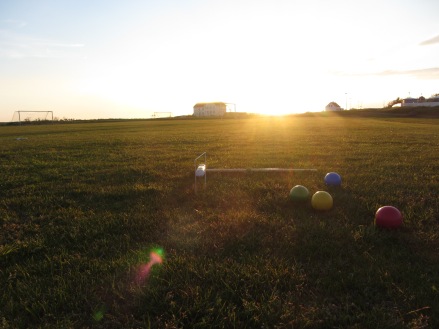
Image via the University of Iceland’s Vísindavefurinn, answering the question: “Hvaðan kemur orðið þumalputtaregla?” (‘Where does the word ‘þumalputtaregla’ come from?’)
I used to routinely get nervous when I’d travel to a new country—worried that I’d somehow inadvertently offend someone or do something wrong or misunderstand protocol and find myself publicly shamed or yelled at or generally embarassed by my own lack of worldliness. This fear wasn’t entirely unfounded: I received a dressing down (in Danish) for turning off a water tap in a museum bathroom in Denmark (still not sure what went awry there), and I accidentally stole a woman’s seat in a theater in Amsterdam, to her shock and horrified displeasure (she yelled; I moved, trying lamely to explain that I didn’t know that while unassigned, the seating was, after the intermission, pretty much set in stone).
These occurrences aren’t the end of the world, though, and while I still find myself worried that I’ll make a fool of myself simply because I don’t know the unspoken system in a new country or city, a little more travel has gone a long way in alleviating some of my concern. Everyone, after all, is a tourist somewhere. And so, by and large, my go-to þumalputtaregla, or rule of thumb, is to just do my best to not be a jerk.
Don’t be a Jerk. Generally, this works out pretty well. But it’s still nice to have a bit of insight into cultural norms and practices before you go somewhere. To this end, the UK’s Business Insider recently tried to shed some light on common sources of irritation for locals when encountering visitors in their countries. Often, I feel like these sorts of lists are vague or stereotypical, but this time around, I found the Iceland advice pretty spot-on. There was only one rule of thumb mentioned for Iceland: “Don’t be overly friendly.” This was drawn from advice given by two Icelandic Reddit users, and as summarized as follows:
“It’s not that Icelandic people aren’t courteous, or would respond unfriendly in the street. We’re just more used to everyone keeping to themselves in public.” – /u/KristinnK
“It’s usually not a good thing to start a conversation with us out of the blue at, say, a museum. […] Saying, ‘Hi, how are you?’ would be the weirdest experience of the week for any Icelander.” – /u/KFJ943
This last one particularly made me giggle because I had just been trying to explain the general look of confusion that one (often an American, I might add) will get if she starts any kind of interaction in a shop (or cultural institution or coffee shop or restaurant) with chit-chat. Namely, “Hi, how are you?” Response: [Confused head tilt.]
As an interesting point of comparison, check out one of the answers given by someone in Norway:
Don’t ask people how they’re doing unless you’re ready to get deep. “We will give an actual answer.” – /u/maiset
Back to this issue of friendliness, however, I would probably suggest that the opposite advice should be given to travelers to the US: always start your interactions with a little chit chat. How are you today? Hi, there, how you doing? Unlike Norwegians, we will probably not respond to a stranger or acquaintance with a full-blown narrative of all of our ills (that would be weird), but we will appreciate that you’ve made the attempt to connect with us on a basic—and most importantly, friendly—level. Of course, this depends on where you are in the country, but boy, howdy, we Americans do (generally) love our pleasantries.
This suggestions didn’t come up for American advisors, however. Rather, they suggested that visitors don’t smoke weed in public, even in places where it is legal (seems like a no-brainer to me, but then again, similar to advice was given by Dutch people to travelers in Amsterdam), don’t stand too close while waiting in line (a distance of an arm’s length was advised), don’t imitate a Southern accent, and don’t assume the whole country is the same. Maybe not the specific collection of advice I would have given someone, but probably not bad places to start. (That not standing too close thing rang true for me—I didn’t realize I had a thing about being crowded until I moved out of the States.)
And that is your friendly Traveling-In-Iceland PSA for today. The More You Know, guys.

















